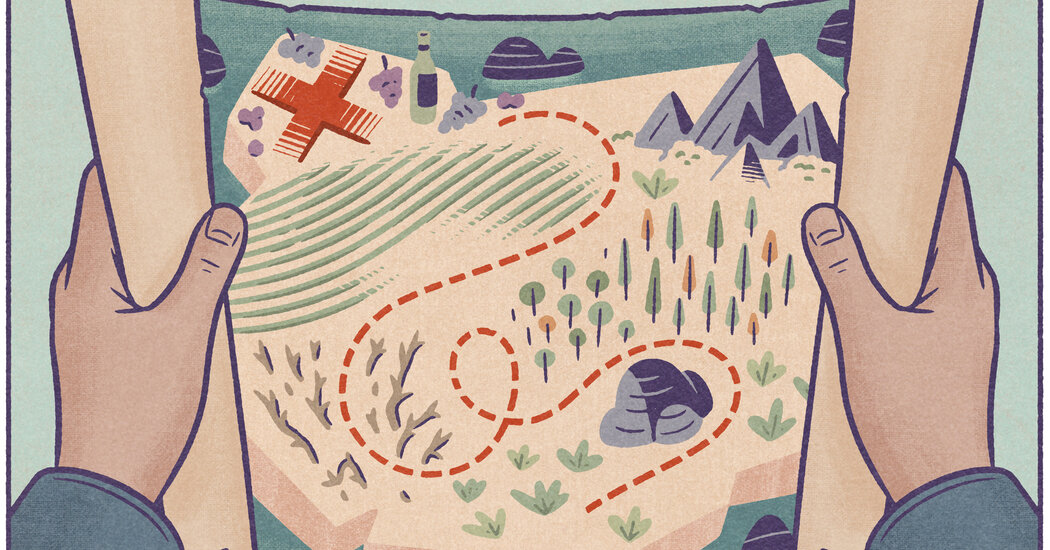Lauren Caggiano had felt sick for days by the time she tested positive for the flu in an emergency room on a February afternoon. Hours later, she was in the intensive care unit. By 4 in the morning, she was on a ventilator.
Ms. Caggiano, a paralegal who lived in Oceanside, Calif., doted on her two dogs and had recently become a grandmother, died two days later. She was 49.
“You don’t really think, if you’re in decent health, that’s going to be what gets you,” her son, Brandon Salgado, said.
Many people recover from a bout of flu within a few days or a week. But every year, the virus still kills more than 36,000 people across the United States and sends hundreds of thousands to the hospital. The Centers for Disease Control and Prevention has said that this flu season has been especially severe.
Some of those who died were at greater risk for getting seriously ill because of underlying conditions or their age. Others, like Ms. Caggiano, were otherwise healthy before their infections. Some had not received the flu shot, which reduces but does not eliminate the risk of death. Some were hospitalized for weeks; others felt ill for only days before they died.
All of their deaths came as a shock to the people who knew them.
A Swift Decline
Part of what stunned Mr. Salgado was just how quickly his mother died.
He had just spoken to her about a week before she fell ill, a quick call with a few minutes for her to FaceTime her granddaughter. Then, a doctor called and told him that his mother was in the hospital and had about a 50 percent shot at survival. That night, her heart stopped multiple times, and she had to be resuscitated.
“We have shocked her about as many times as we can,” a doctor told Mr. Salgado and Ms. Caggiano’s mother.
By that point, she needed dialysis for her kidneys to function, and her brain showed little activity. She had lost circulation in her limbs and would need her arms and legs amputated if she survived. “She would not want to live that way,” said Mr. Salgado, who decided along with his grandmother to sign a “do not resuscitate” order. They eventually took her off a ventilator, and she died within minutes.
Dr. Sean Liu, an associate professor of infectious diseases at the Icahn School of Medicine at Mount Sinai in New York City, said that the flu can swiftly turn from a mild illness to a serious infection.
One morning in January, Ca’Myiah Simmons, 16, fainted while getting ready for school at her Sherwood, Ark., home. Her parents rushed her to the emergency room, where she tested positive for the flu. Doctors soon transferred her by ambulance to a children’s hospital.
Her mother, Shanae Franklin, was confused by what was unfolding. “We were like, ‘Because of the flu?’” she recalled thinking.
Ca’Myiah was admitted to the intensive care unit overnight. Her father stayed by her bedside. When Ms. Franklin returned the next morning, her daughter looked darker, frailer. Ca’Myiah, a “homebody” who loved taking care of her two younger siblings and singing in the school choir, could no longer speak.
It “wasn’t her,” Ms. Franklin said.
There wasn’t enough oxygen reaching her brain, doctors would later explain. Her body was so cold that nurses covered her in hot towels to try to raise her temperature. Looking back, Ms. Franklin keeps wondering what would have happened if she had been able to get more oxygen, or received more medical attention, she said.
But just 15 minutes after Ms. Franklin walked in the room, and only a few days after she first fell ill, Ca’Myiah, a high school junior who dreamed of becoming a nurse, died.
A Vulnerable Immune System
A bout of flu alone can be deadly, leading to inflammation that damages the lungs until the body can’t recover. Fighting the virus can also leave people more vulnerable to other deadly infections.
The flu shot lowers the chance of contracting the flu, and of developing complications from it. When someone falls seriously ill, doctors can use antiviral medications to try to help patients recover.
Still, the virus and those overlapping infections can be dangerous, especially for the very young, the very old and people with underlying medical conditions that compromise their immune systems.
It wasn’t until Mark Walsh was seriously ill in the hospital with flu and strep that doctors realized he had undiagnosed coronary artery disease, which may have made him more susceptible to severe complications.
When Mr. Walsh first started struggling to breathe one night in late February, he thought he might be having a panic attack. He shook so much that his wife, Christine Walsh, worried he was having a seizure. She urged him to go to the emergency room.
“You have to — you have two small children,” she told him.
Mr. Walsh initially tested negative for flu, Covid and strep. But he grew sicker and soon needed intubation to breathe. He went into cardiac arrest three times. Doctors performed CPR.
While Mr. Walsh was in the hospital, his wife took their young sons to the pediatrician, where they tested positive for strep and the flu. Mr. Walsh would eventually test positive for both infections. By that time, the strep had led to a dangerous blood infection known as sepsis, and he was on life support.
Before he fell ill, Mr. Walsh spent nearly 20 years as a detective for the Boston Police Department, and had worked on the emergency response to the Boston Marathon bombing. He had been looking forward to coaching his son’s T-ball team this spring and to summer barbecues with his new smoker. He died on Feb. 20.
Ms. Walsh keeps thinking about the early morning hours before her husband left for the hospital. Her 4-year-old son woke up in the night, trotted down the hall and wrapped his arms around his father.
“That’s just going to be a core memory for me and something that I can tell him,” Ms. Walsh said. “That you gave Daddy a hug before he went to heaven. I feel like Mark needed that hug in that moment too.”
‘Daddy’s Special Rock’
People who have lost loved ones this flu season expressed similar feelings of disbelief. It seemed as if there had to be a better explanation, an easier one to understand.
Ms. Walsh is trying to help her sons, ages 1 and 4, process the fact that their father is gone. She brought them to what she called “Daddy’s special rock” on Easter morning, before they went to Mass. Her older son left monster trucks and dinosaur toys by his grave.
“It’s not how you envision your kids seeing their dad,” she said.
Mr. Salgado is trying to accept the reality that he can no longer call his mother, that his eight-month-old daughter will never get to know the way she frequently cracked jokes or how she rarely lost an argument.
“I’m definitely sad for me,” he said. “But what makes me cry is just knowing that my daughter’s not going to have any memories of her.”
Mark Zaccarine, whose grandmother Patricia died after contracting the flu last month at age 84, spent the last weeks of her life by her bedside, peppering her with questions about her life because he was afraid he wouldn’t get the chance to ask again.
She told him about the night she met her husband on a blind date when she was 18. They argued so much about which movie to see that he pulled over and told her to get out. She refused. When he left to get popcorn from the concession stand at the drive-in theater, she moved the car. It was her form of payback.
There were some days in the hospital when she couldn’t speak. As she grew sicker, Ms. Zaccarine was intubated and then put on a ventilator. She would pat her chest to show she wanted a hug.
When she did speak, Mr. Zaccarine said, one of the first things she said was: “I have the flu. What is going on?” He added, “She couldn’t understand why it was that bad.”
She eventually developed pneumonia in both lungs and, later, a bacterial infection that commonly spreads in hospitals.
Since her death on March 18, Mr. Zaccarine has tried to find ways to honor her memory. She loved cardinals and so, shortly after she died, he got a tattoo on his arm, a large bird, with the phrase “Don’t fret” in her handwriting. He put a bird bath engraved with her birth and death dates in his backyard and planted dianthus and a Japanese maple tree, hoping to attract cardinals.
Every day, he checks to see if the birds have come.









